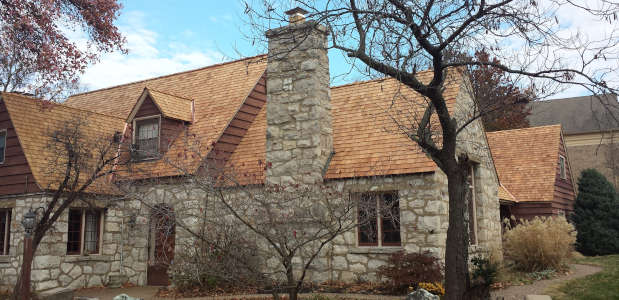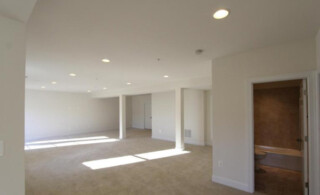
Every state has a federally designated historic preservation office (HPO) that is the clearinghouse for a tremendous amount of information about preservation activities. There is no cost or obligation for their assistance. They will be able to provide you with:
- Maps showing boundaries of the National Register Historic District
- Lists of properties in your state that are on the National Register of Historic Places
- Pamphlets of information about how to get your property or your project “certified”
- Preservation guidelines and pamphlets with technical information about work techniques
- Information about tax credits
- Procedures to follow in case one or more of the recommended work methods does not
comply with local building codes
National Register District
If your property is on the National Register or in a National Register district, the federal guidelines will govern work on both the inside and the outside of your building and federal incentives may be available to you.
If your property is in a local district, only the work on the outside of the building including any site work will be of concern to the local historic commission, and if your district has been “certified” by the state, you may also have access to certain incentives and supports.
Ready to start your Renovation?
Find ProsIn either case, the commission with jurisdiction will want to review your renovation plan thoroughly before you begin work, and you will want to know that your plan conforms with their guidelines before you pay your designer and before you go out to bid. A renovation project on a property with historic significance will not receive a building permit unless the appropriate historic commission has approved the work first.
None of the historic authorities are inflexible. Contemporary design may be welcomed as long as the scale and character of the neighborhood is reflected in the new structure. Generally, projects are reviewed with some consideration for economic and technical feasibility; the standards are not applied unreasonably.
In addition, the building does not need to be listed in the National Register or have any other special historic designation in order for you to get technical assistance from a preservationist.
Preservationists have lots of experience helping property owners find cost-effective, preservation-sensitive solutions to renovation challenges. By discussing your project with them before you begin your design, you will not only be able to incorporate some of their wonderful ideas, but you will also ensure that your plans will be approved when the commission reviews them.
Historic Preservation Tip: Look for a designer with preservation design experience. They will know the rules and design accordingly, and they may know some of the folks on the design review committee as well, which could be very helpful.
Four Kinds of Preservation Projects
Choosing an approach for your project will require that you consider two things: your property’s current physical condition and its relative importance in the context of the history of its area.
There are four work methods that can be applied. You can get copies of each set of standards from the state. The work methods are differentiated in the following ways:
Historic Preservation
Preservation work retains the existing historic fabric by conserving, maintaining and repairing original materials.
- Use the property as it was used historically or find a new use that maximizes retention of distinctive features.
- Preserve the historic character
- Stabilize, consolidate, and conserve existing historic materials
- Replace “in kind” (using identical or substantially similar materials) the minimum amount of fabric necessary to preserve the building’s integrity
Historic Restoration
Restoration work retains the materials from the most significant time in the property’s history, while permitting the removal of materials from other periods.
- Use the property as it was used historically or find a new use that reflects the restoration period.
- Remove features from other periods, but document them first.
- Stabilize, consolidate, and conserve features from the restoration period.
- Replace a severely deteriorated feature from the restoration period with a matching feature (Limited substitute materials may be used.)
- Do not execute a design that was never built.
Historic Reconstruction
Reconstruction gives limited opportunities to re-create a non-surviving site, landscape, building, structure, or object, in all new materials.
- Do not reconstruct vanished portions of a property unless the reconstruction is essential to the public understanding.
- Reconstruct to one period of significance based on documentary and physical evidence.
- Precede reconstruction with thorough archeological investigation
- Preserve any remaining historic features.
- Re-create the appearance of the property (substitute materials may be used).
- Identify the reconstructed property as a contemporary re-creation.
- Do not execute a design that was never built.
Historic Rehabilitation
Rehabilitation, like Preservation work, also includes the repair of original materials, but it allows more latitude for replacement when the original materials are in deteriorated condition.
- Use the property as it was used historically or find a new use that requires minimal change to distinctive features.
- Preserve the historic character
- Do not make changes that falsify the historical development
- Repair deteriorated historic materials and features. Replace a severely deteriorated feature, using matching materials to the greatest possible extent.
- New additions and alterations should not destroy historic materials or character. New work should be differentiated from the old, yet compatible with it.
Rehabilitation is not only the least stringent treatment, it is the most relevant to most residential and small-scale commercial renovation work, and is eligible for tax credits, so we will focus on rehabilitation work standards here.
Susan Solakian, author of Managing a Renovation: Staying in Charge & Out of Trouble, has over 20 years of experience as a remodeling professional. In 2001 she created Renovations Consulting, Inc. to offer remodeling management classes and advice to property owners planning substantial home remodeling projects.
 What to Do When the Job Goes Wrong
What to Do When the Job Goes Wrong  The Guest House: A Visitor’s Home away from Home
The Guest House: A Visitor’s Home away from Home  Dream Remodel, Real-Life Budget
Dream Remodel, Real-Life Budget  Fixing Your Fixer-Upper
Fixing Your Fixer-Upper  The Safe Haven of a Panic Room
The Safe Haven of a Panic Room 

Are You Familiar With This Topic? Share Your Experience.